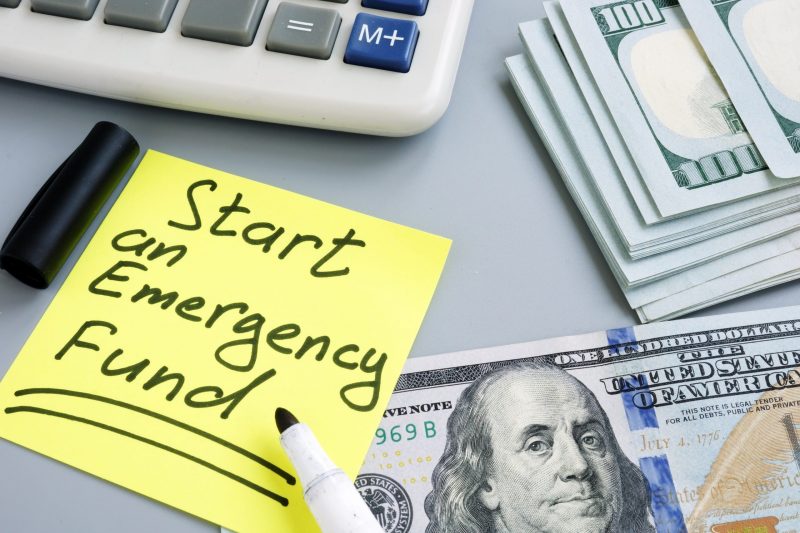WORRIED ABOUT A FINANCIAL DISASTER? HAVING AN EMERGENCY FUND CAN HELP

You’ve heard all the clichés. Save for a rainy day. A penny saved is a penny earned. Saying like that may be old, but they have stood the test of time, and with good reason.
Even if you’re just starting out, having an emergency fund can be the difference between financial strength and economic disaster.
But how do you go about starting an emergency fund? How much should you save? The list of questions goes on and on. So let’s take a moment to answer a few of these questions so you can be in a position of strength should disaster strike.
Why do you even need an emergency fund?
The short answer is, life happens. People get sick, they get laid off, and vehicles break down. It would be nice to be immune to all these things, but the fact is, at some point in your financial future, you’re going to need a lot of money for an unexpected expense. If you don’t have an emergency plan, you’ll go into debt to pay for it.
That, of course, only makes the problem worse because the expense turns into high-interest payments and can drag on for years. The alternative is to dip into retirement savings to pay for an emergency. That’s almost as bad as going into debt. There can be penalties involved, and you mortgage your future when it could have been avoided.
Having a stash of cash helps you avoid all those issues.
How much to save
A strong emergency fund has three to six months of living expenses in it. That is for bare-bones living, not extras like vacations or eating out. We are talking about paying for utilities, making sure you can get to work, keeping food on the table, and replacing clothing if necessary.
How do you know how much that might be? If you have a budget, simply add up the necessary items and multiply it by the number of months you want to save. If you don’t have a budget, look at your purchases and expenses on bank accounts and credit card statements to see what is necessary.
The prospect of saving that much can be daunting, so start small. Set aside as little as $500 just to get started and keep saving. Even that amount can blunt the blow of many emergencies.
How to save for an emergency fund
Let’s go back to reviewing your budget. What can you cut out or cut back on for a while to start your fund? Consider dropping one dinner a month or going on a less expensive vacation. Then put those savings straight into the emergency fund.
Some windfalls might help. Tax returns and inheritance are all good candidates for starting a fund.
Managing the emergency fund
It’s essential to determine what constitutes an emergency. It should be something that has long-term potential to cause financial harm.
But the fund will only work if the money is there. So be sure to save it for things like vehicle repairs and lost jobs.
Put some friction between you and the money to avoid the temptation of using it for fun. One way is to put the money in a separate account in a different bank. Don’t attach it to a debit card or a checking account.
And don’t invest it, no matter how tempting it might be. It’s an insurance policy. It isn’t designed to make (or lose) money. It’s designed to save you when it’s needed.
There you have it. An emergency fund can literally be a life-saver, but it takes a little work and management. Start small, save steadily, and make it hard to access. Then you’ll be ready when disaster strikes.